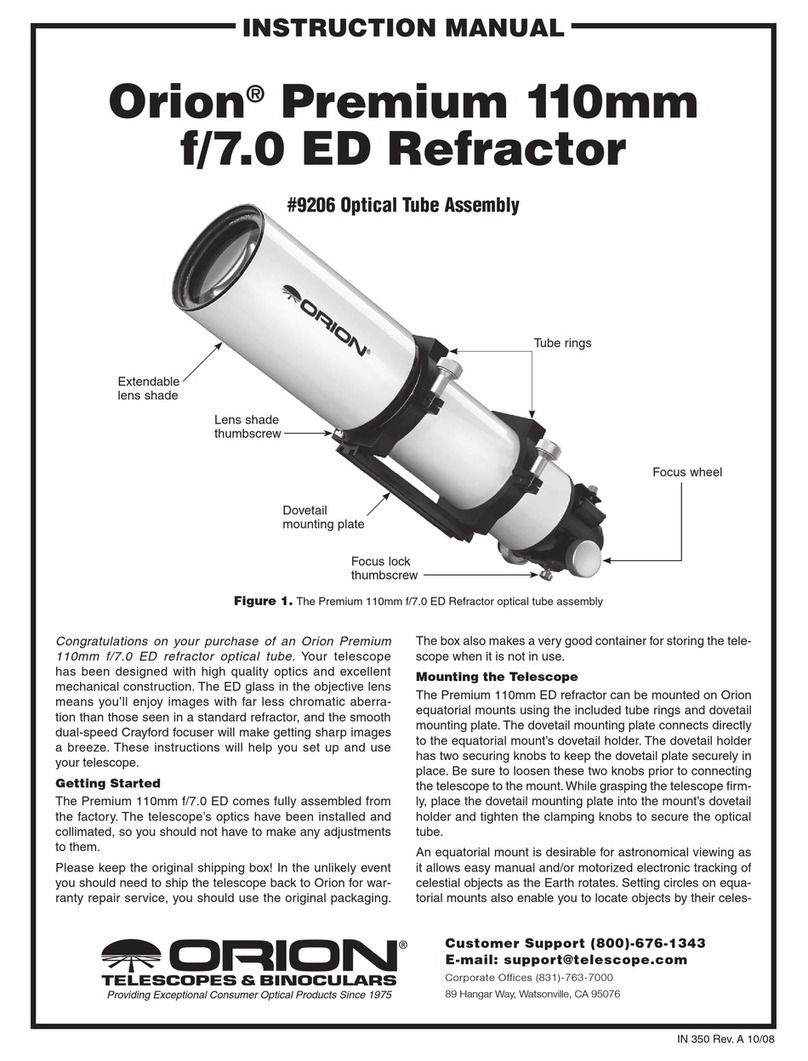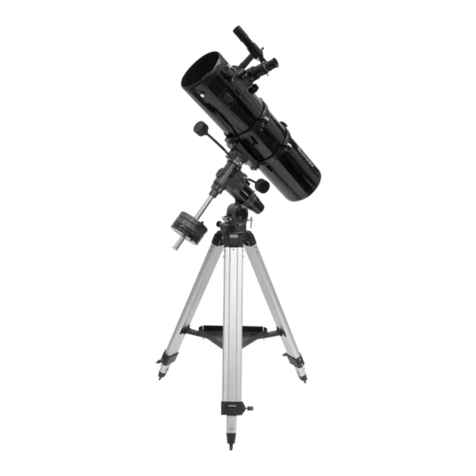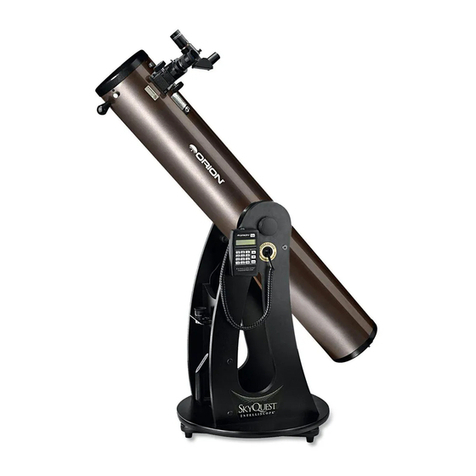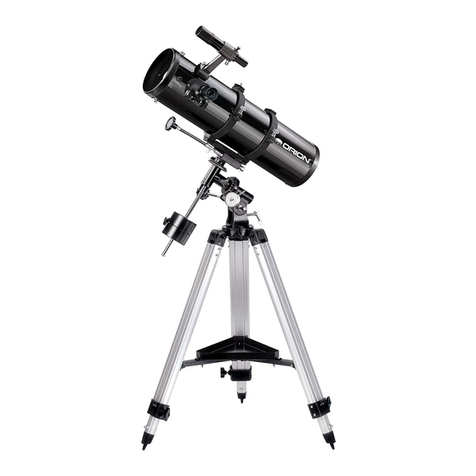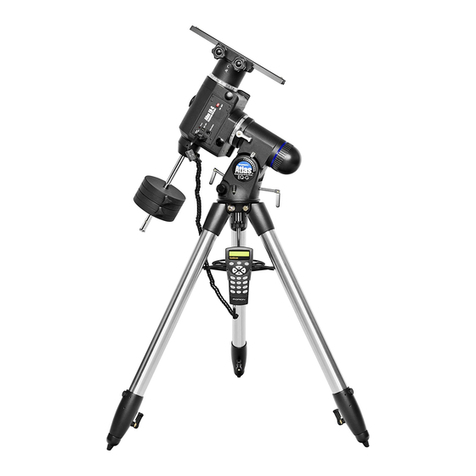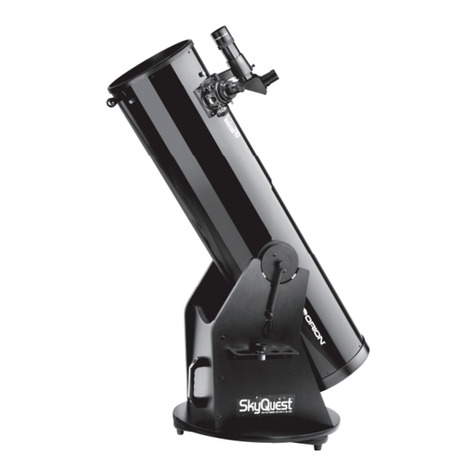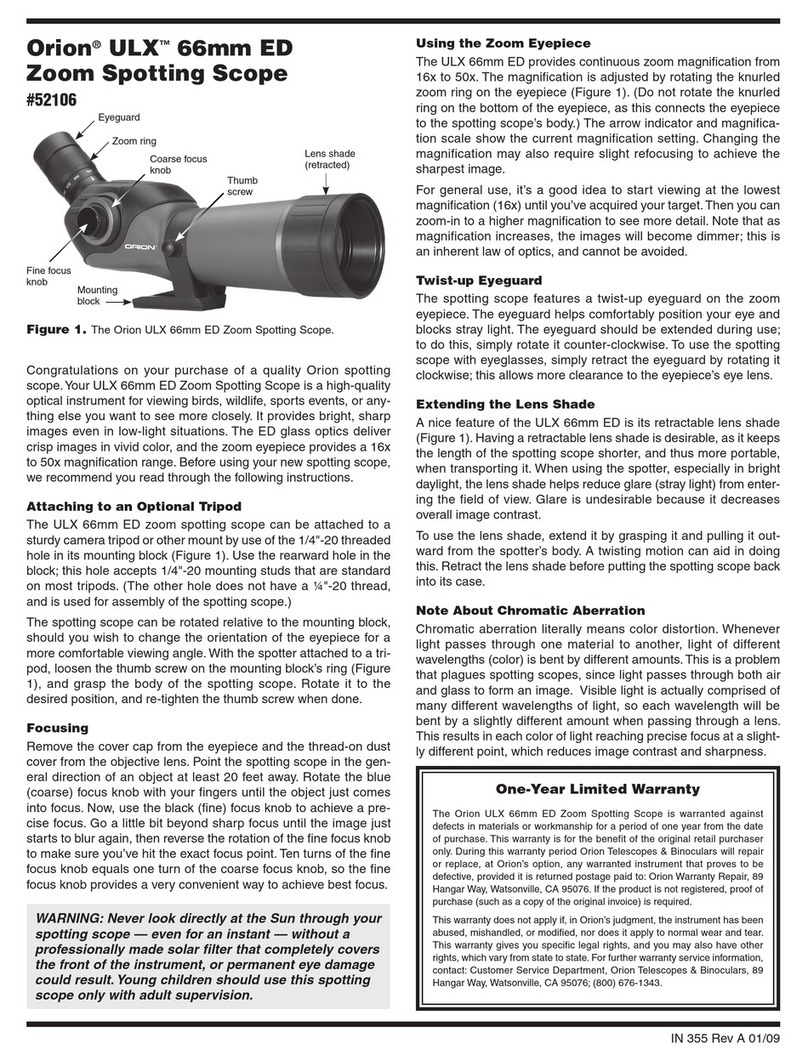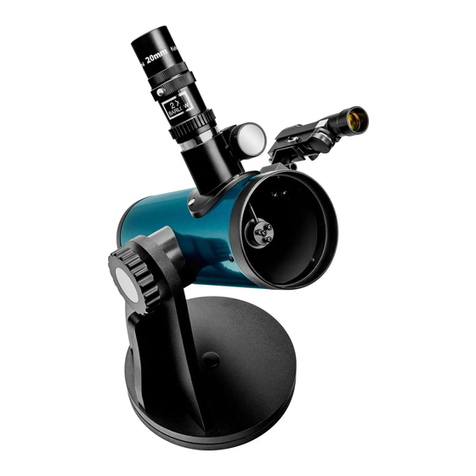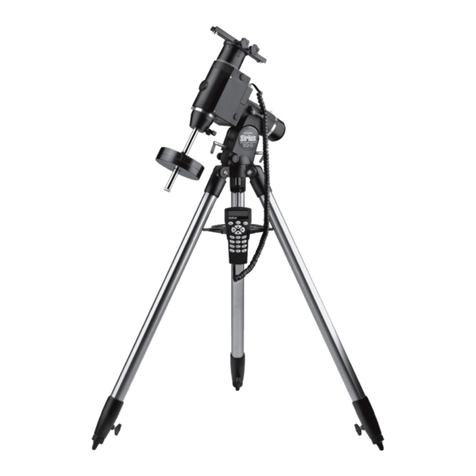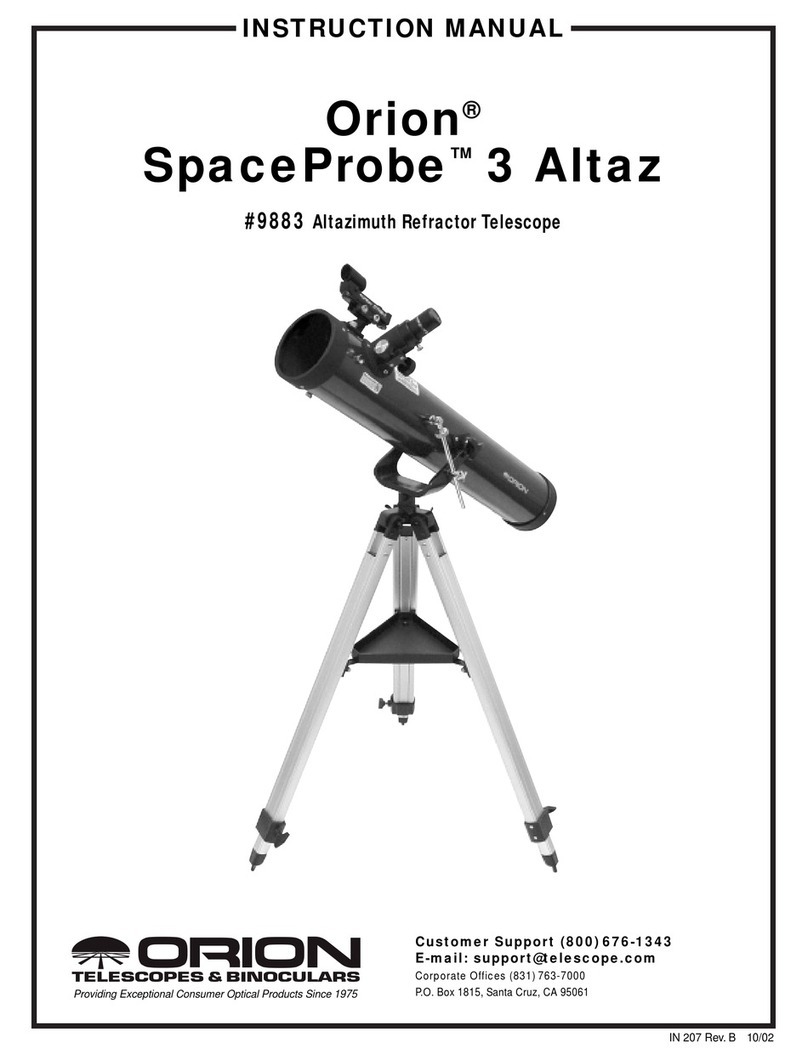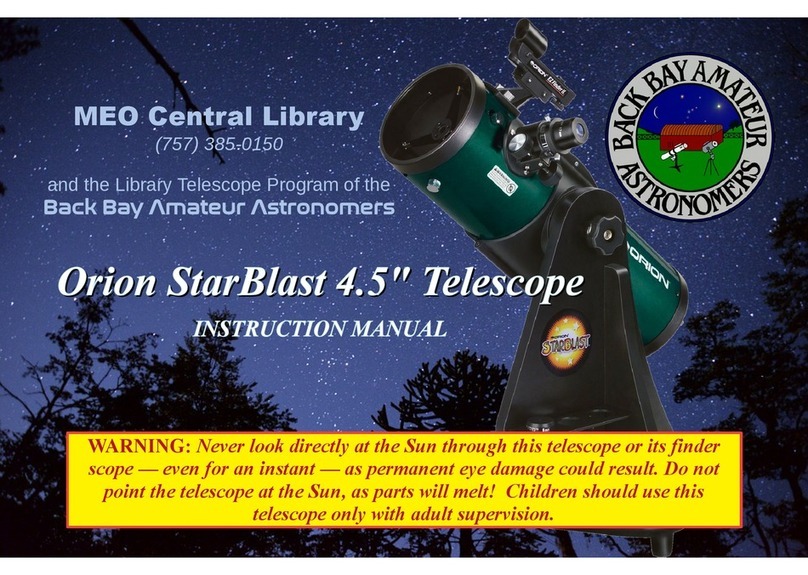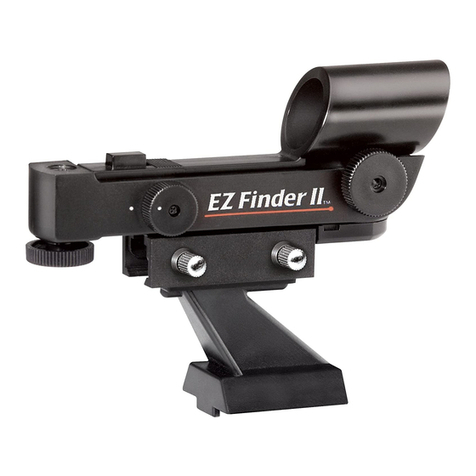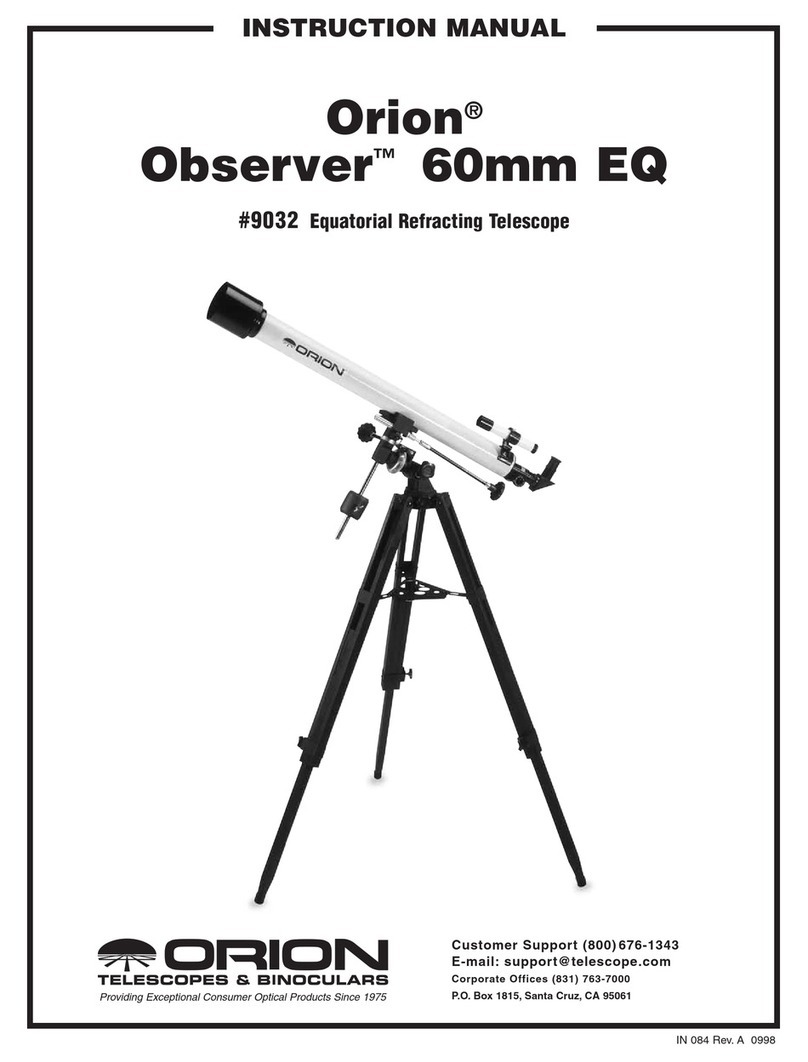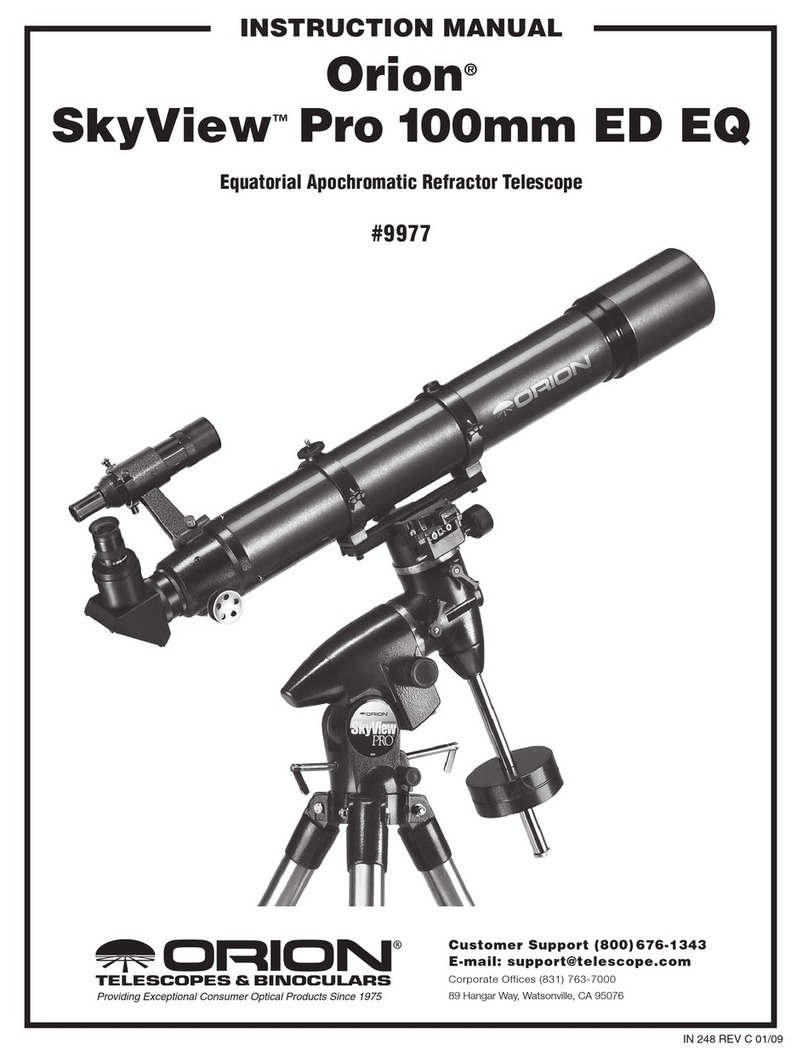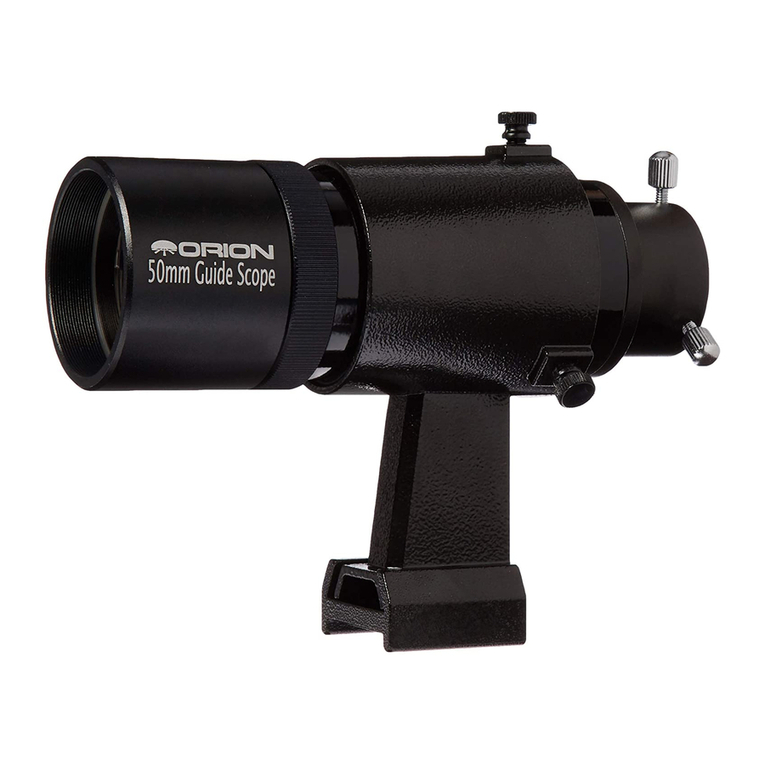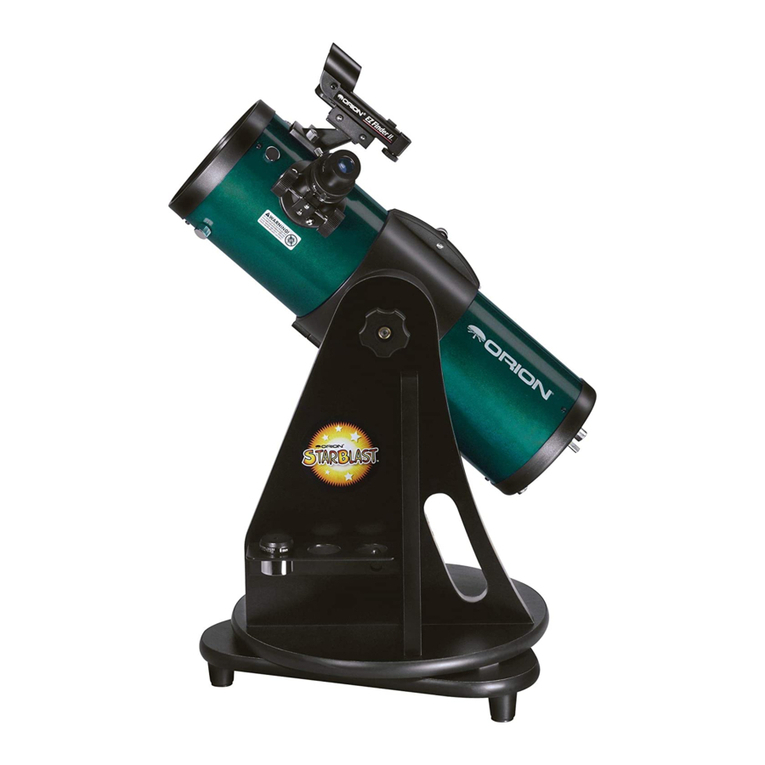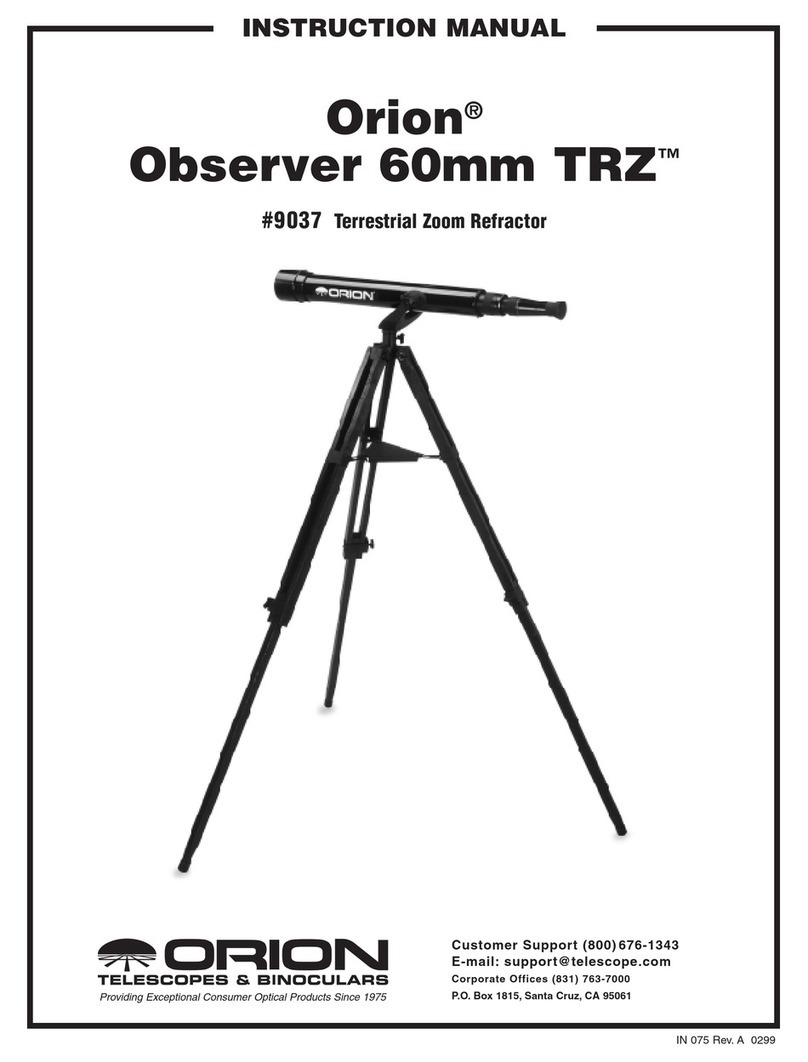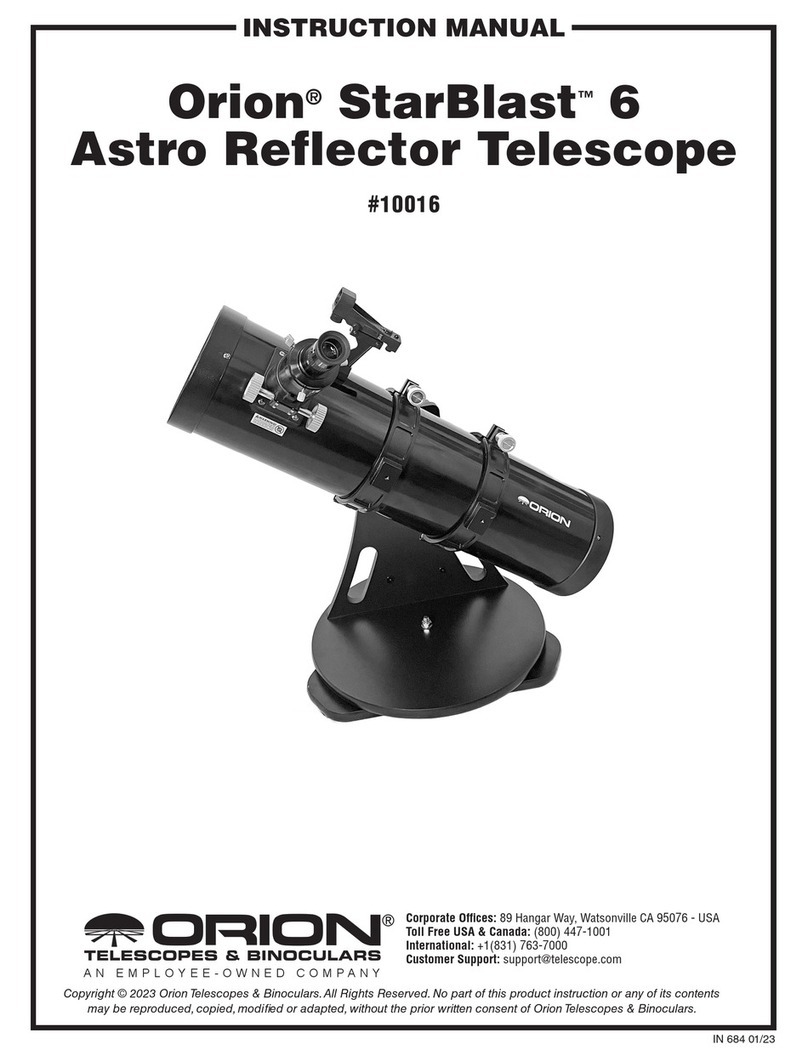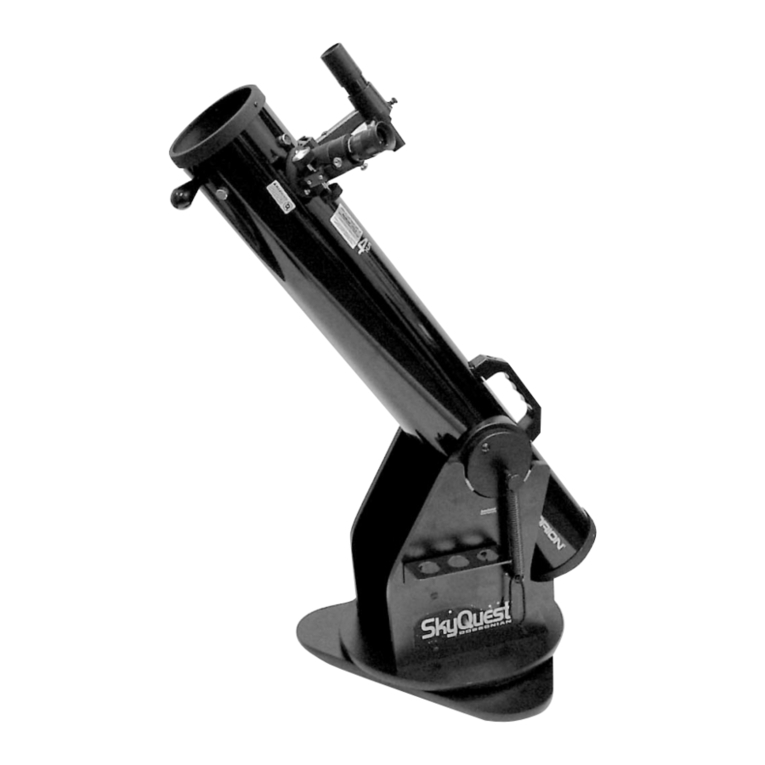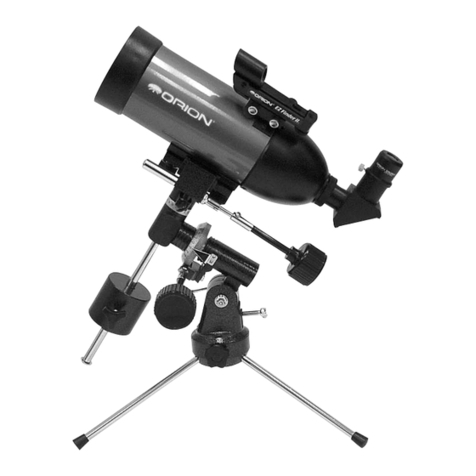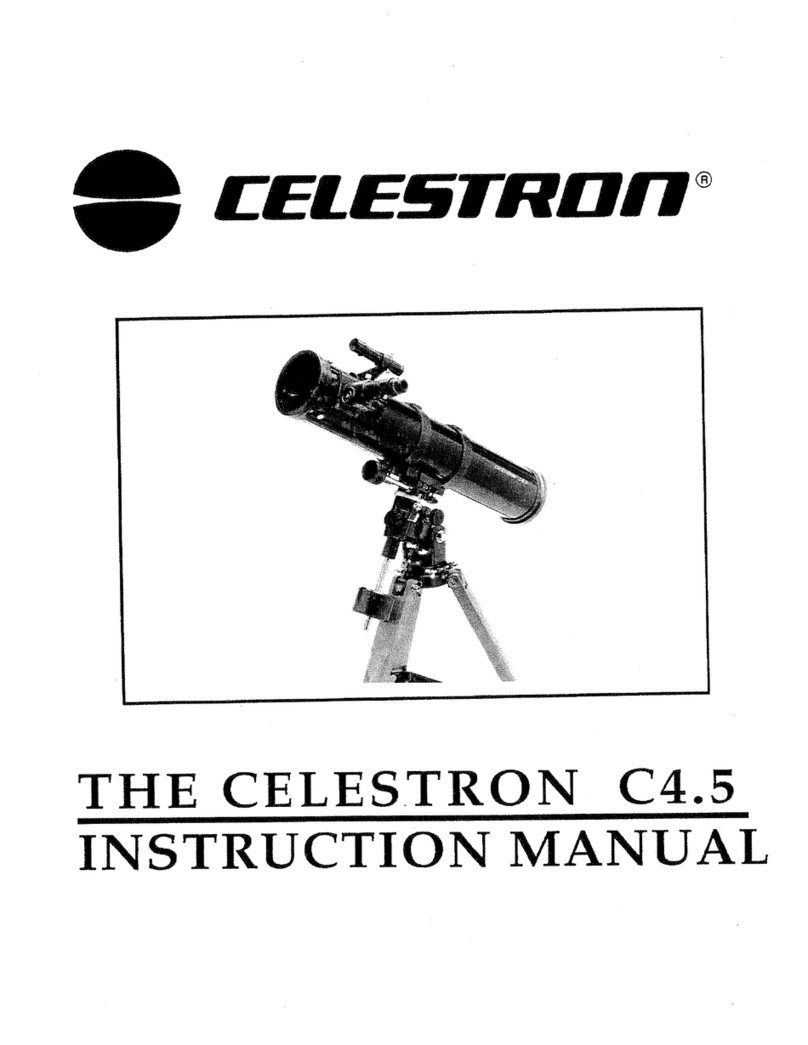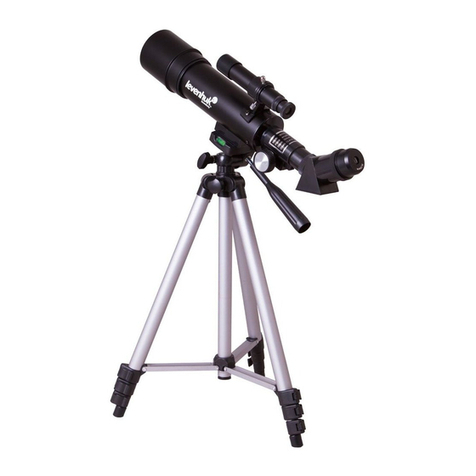
2
Preparing the Telescope for Collimation
Once you get the hang of collimating, you will be able to do it
quickly even in the dark. For now, it is best to collimate in day-
light, preferably in a brightly lit room and aimed at a white wall.
It is recommended that the telescope tube be oriented hori-
zontally. This will prevent any parts from the secondary mirror
from falling down onto the primary mirror and causing damage
if something comes loose while you are making adjustments.
Place a small sheet of white paper inside the optical tube
directly opposite the focuser (Figure 3). The paper will provide
a bright “background” when viewing into the focuser.
Aligning the Secondary Mirror
To adjust the secondary mirror collimation, you will need to use
the correct size of Allen key, which is often a 2mm or 2.5mm
key. One may have been included with your telescope.
If the entire primary mirror is not visible in the secondary mir-
ror when using the collimation cap, as in Figure 1b, you will
need to adjust the tilt of the secondary mirror with the three
recessed setscrews surrounding the center screw (Figure 3).
Using the hex key, first loosen one of the three alignment set
screws by no more than ¼ turn, then lightly tighten the other
two to take up the slack. Is the primary mirror reflection more
centered now? The goal is to center the primary mirror reflec-
tion in the secondary mirror, as in Figure 1c. It will take some
trial and error, but by adjusting the three setscrews a small
amount at a time, you should be able eventually to see the
whole primary mirror in the secondary mirror.
At the end of the procedure all three setscrews should be tight
– but don’t overtighten! – to ensure that the secondary mirror
can’t move.
Aligning the Primary Mirror
The primary mirror of the StarBlast 114mm is fixed in place, so
no adjustments to it are necessary, or even possible.
The view through the collimation cap should now resemble
Figure 1c. A simple star test (see below) will indicate how well
the telescope optics are collimated.
Star-Testing the Telescope
When it is dark, point the telescope at a bright star and accu-
rately center it in the eyepiece’s field of view. Slowly de-focus
the image with the focusing knob. If the telescope is correct-
ly collimated, the expanding disk should be a perfect circle
(Figure 4). If the image is unsymmetrical, the scope is out of
collimation. The dark shadow cast by the secondary mirror
should appear in the very center of the out-of-focus circle, like
the hole in a donut. If the “hole” appears off-center, the tele-
scope is out of collimation.
If you try the star test and the bright star you have selected is
not accurately centered in the eyepiece, the optics will always
appear out of collimation, even though they may be perfectly
aligned. It is critical to keep the star centered, so over time you
may need to make slight corrections to the telescope’s position
in order to account for the sky’s apparent motion. A good star
to point at for a star test, for northern hemisphere observers,
is Polaris, the North Star, because its position does not move
significantly over time.
a.
b.
Figure 3. (a) Place a piece of white paper inside the tube
opposite the focuser, (b) Use a 2mm Allen key to adjust the
three collimation setscrews surrounding the center screw of
the secondary mirror housing.
Figure 4. A star test will determine if a telescope’s optics
are properly collimated. An unfocused view of a bright star
through the eyepiece should appear as illustrated on the
right if the optics are perfectly collimated. If the circle is
unsymmetrical, as on the left, the scope needs collimation.

